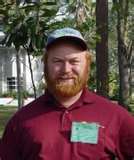Oh lo, how many years have passed since one of the country's leading property rights attorneys asked me to meet with him and his assistant to go over my deposition prior to giving it. He was the lead property rights attorney for Florida's oldest law firm. He was located over 400 miles away, and wanted me to meet him at a pancake house at 5:00 AM. My deposition was at 9:00 AM the same day. The matter evolved around the governments taking of private property for public use - eminent domain - which may be found under Article 5 of the Bill of Rights. The issue of eminent domain is, and was, so crucially important to our founding fathers that the same number of jurors required for capital murder is also required for eminent domain trials. When you work in the field of eminent domain you are working in the literal heartbeat of our constitution.
And such it was at 5:00 AM on a particular summer day that I met with this fierce and dedicated proponent of property rights. His assistant, whom I recently heard from and w ho has since moved to a nose bleed floor atop one of South Florida's most prestigious law offices, was in his infancy as it relates to knowledge of eminent domain and plant appraisals. It seemed that he was in good company with me or vice versa, as I to was just joining the ranks of the initiated as it relates to appraising plants in property rights cases.
And this was not to be a perfunctory baptismal into the murky waters of knowledge regarding the appraisal of plants in front of a home or business. No, it had to be a tree farm where there were not only plants which were going to be taken due to community improvements but plants whose loss would go into perpetuity and with resultant damages to the remainder nursery. To further numb my mind, and that of my learned colleague, the area to be taken was partial in nature, and had a temporary construction easement, as well as a utility easement. Little did I know: this was to be a swell morning.
After approximately an hour and a half of the master attempting to teach his grasshoppers the fundamentals of plant appraisals as it relates to case law, he slammed his fist upon the table knocking coffee out of cups and proclaimed to the upstart attorney, "I would expect him (meaning me) to be an idiot, but not you". So, I was indeed in good company. The remark left me feeling rather brilliant (there was an attorney as stupid as me) as I am sure it left him feeling rather poorly (he was as dumb as an arborist like me). In the end, the master in a final fit of frustration vociferously proclaimed the three principles which inculcate any plant appraisal, to wit: 1. the plant must be appraised for its in-place (as is) value 2. the plant must be appraised for its cost of cure or repair 3. severance damages (economic damages done to the remainder property due to the taking or casualty). PERIOD. No exceptions.
After three hours of additional instruction, I had one hour to get across town and into deposition. While I do not remember much regarding that deposition I do remember that it turned on my testimony of the in-place value first, and cost to cure second. The expert arborist across from me did not first apply an in-place value; instead, he went on to financially cure the damaged nursery. While his approach was rather brilliant, the disposition of the case went against him because there was no in-place value of the product ever established.
Years have passed, more than a decade now, and I just recently came up against three venerable plant appraisers, two of which were Board Certified Master Arborists and Registered Consulting Arborists, and one of which was a Member of the Appraisal Institute. Three separate cases and three separate appraisers, all of whom had one thing in common: they went directly to the cost of curing the casualty trees and plants without first establishing their in-place value.
This mistake was lethal to their side even though their costs to cure numbers were generous and well thought out.
Consider that you were appraising a car that had just been in a wreck. We have all heard the word "totaled" before. It alludes to the fact that repairing the car will cost as much as or more than the value of the casualty car itself. One cannot "total" a car unless one first knows the value of the car at the time it became a casualty. Moreover, we cannot provide a cost to cure (repair the casualty car) unless we know the value of the car to begin with. Case law is clear on this matter and as well it should be. As an example, an insurance company will not provide as a cost to cure the value of a new Cadillac if the car that was wrecked was an early model compact vehicle, or vice versa. The cost to cure number cannot exceed the value of the part taken, nor can the cost to cure number exceed the value of the
severance damage. One notable exception to this rule is if the casualty tree or plant has no value, or even a negative value, providing that the cure cost relates to appraising the lost function of the casualty tree or plant. When appraising a tree whose value cannot be established in the marketplace, or has a negative value, the plant appraiser must be careful not to provide a betterment as it relates to species, size, or quantity.
Appraising the value of plants is a matter of science and art. The approaches to value are almost as varied as the different scenarios faced in plant appraisals. Some appraisers like to use the Tree Trunk Formula Method while others prefer replacement cost or inch-for-diameter-inch replacement. Still others prefer to integrate the approach of land values as it relates to plant valuations. The list of possibilities goes on. Whichever approach to value that you use to determine the in-place value of a plant, the cost to cure does not belong in the equation.
I do not know if it is hubris, ignorance, or rank going to one's head, but it really doesn't make a difference what designation you have behind your credentials as long as you follow the basics of plant appraisals; otherwise, you risk feeling like an upstart attorney sitting next to an arborist in a pancake house at 5 o'clock in the morning.










